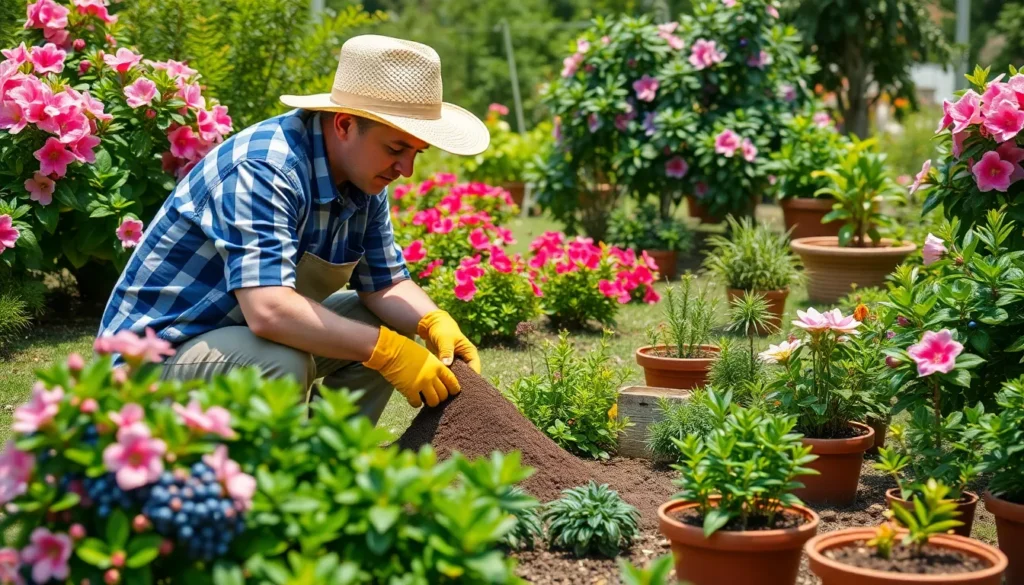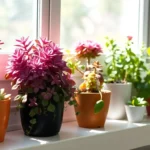We’ve all been there – standing in our kitchen with a pile of used coffee grounds wondering if they’re destined for the trash or if they could serve a greater purpose in our gardens. The good news is that many plants absolutely love coffee grounds and thrive when we incorporate this nitrogen-rich waste into their care routine.
Coffee grounds aren’t just kitchen scraps – they’re a gardener’s secret weapon that can transform both indoor houseplants and outdoor garden beds. From acid-loving blueberries to vibrant azaleas these grounds provide essential nutrients while improving soil structure and drainage.
Before we jump into which exact plants benefit most from coffee grounds we need to understand why this common household waste has become such a popular organic amendment. The science behind coffee grounds reveals they’re packed with nitrogen phosphorus and potassium – the holy trinity of plant nutrition that can give our green friends the boost they need to flourish.
What Plants Like Coffee Grounds: Understanding the Basics
Building on the foundational benefits we’ve explored, let’s dive deeper into the exact mechanisms that make coffee grounds such an effective gardening amendment.
Why Coffee Grounds Benefit Certain Plants
Coffee grounds contain approximately 2% nitrogen, making them particularly valuable for plants that require high nitrogen levels for optimal growth. Acid loving plants like azaleas, blueberries, and rhododendrons thrive when we add coffee grounds to their soil because these grounds naturally lower soil pH levels.
Organic matter in coffee grounds improves soil structure by creating better drainage and aeration around plant roots. We’ve observed that plants with shallow root systems, such as lettuce and radishes, respond exceptionally well to the loose, well draining environment that coffee grounds create.
Microorganisms in the soil feed on coffee grounds, releasing essential nutrients slowly over time. This gradual nutrient release prevents the burning that can occur with synthetic fertilizers while providing sustained nourishment for plants like tomatoes and peppers.
How Coffee Grounds Affect Soil pH and Nutrients
Fresh coffee grounds typically measure between 6.5 and 6.8 on the pH scale, making them slightly acidic but not as dramatically acidic as many gardeners believe. Used coffee grounds, which we recommend for gardening, actually have a more neutral pH of around 6.0 to 7.0.
| Nutrient | Percentage in Coffee Grounds | Benefit to Plants |
|---|---|---|
| Nitrogen | 1.5-2.0% | Promotes leaf growth and chlorophyll production |
| Phosphorus | 0.3-0.6% | Supports root development and flowering |
| Potassium | 0.6-0.8% | Enhances disease resistance and fruit quality |
| Magnesium | 0.1-0.2% | Essential for photosynthesis |
Decomposition of coffee grounds releases these nutrients gradually, creating a slow release fertilizer effect that feeds plants consistently over several weeks. We find that this steady nutrient supply particularly benefits heavy feeders like corn, squash, and cucumber plants.
Soil microbes break down coffee grounds and create humus, which improves the soil’s ability to retain moisture while maintaining proper drainage. This enhanced soil structure allows plant roots to access both water and oxygen more effectively, leading to stronger, healthier plant growth.
Acid-Loving Plants That Thrive With Coffee Grounds
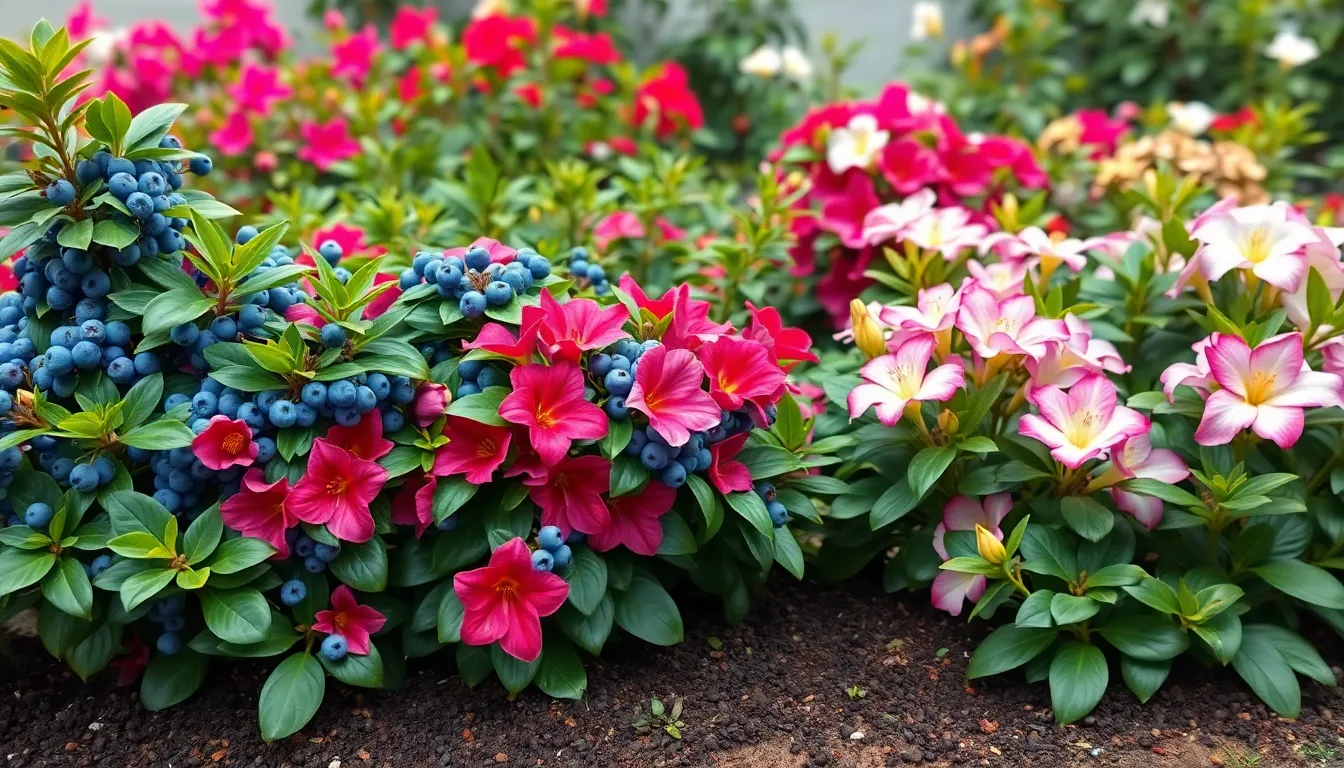
While coffee grounds don’t dramatically acidify soil like sulfur-based amendments, they provide organic matter and nutrients that benefit plants preferring slightly acidic to neutral conditions. These acid-loving varieties respond particularly well to the improved soil structure and gradual nutrient release that coffee grounds offer.
Blueberry Bushes and Berry Plants
Blueberries need acidic soil conditions to thrive, making them ideal candidates for coffee ground applications. Coffee grounds provide 1-2% nitrogen content along with trace nutrients like calcium and magnesium that support healthy berry production. We recommend incorporating used coffee grounds into the soil around blueberry bushes rather than applying them as thick mulch to prevent water repellency issues.
Berry bushes benefit from the improved organic content that coffee grounds deliver, though we should note that grounds alone won’t significantly lower soil pH. Mixing coffee grounds with other organic materials like shredded leaves creates a balanced amendment that promotes microbial activity in the root zone. This enhanced soil biology helps blueberry roots access nutrients more effectively while maintaining the slightly acidic environment these plants prefer.
Azaleas and Rhododendrons
Azaleas and rhododendrons flourish in acidic soil conditions, making them perfect recipients for coffee ground amendments. These flowering shrubs respond well to the organic nutrients coffee grounds provide, particularly the nitrogen content that supports their lush foliage development. We’ve found that incorporating coffee grounds into existing soil or compost improves soil texture and aeration around these shallow-rooted plants.
Rhododendrons especially benefit from the improved drainage that coffee grounds create when properly mixed into garden beds. The organic matter breaks down gradually, releasing nutrients over time without the risk of burning these sensitive plants. Adding coffee grounds to the soil around azaleas and rhododendrons also promotes beneficial microbial activity that these acid-loving plants depend on for optimal nutrient uptake.
Camellias and Gardenias
Camellias prefer acid to neutral soil conditions and respond exceptionally well to coffee ground applications throughout their growing season. These elegant flowering shrubs benefit from both the nitrogen content and micronutrients that coffee grounds supply, resulting in improved flower production and healthier foliage. We recommend working coffee grounds into the soil around camellia bases to enhance soil aeration and water retention.
Gardenias thrive when coffee grounds are incorporated into their planting areas, as the organic amendment improves soil structure while providing essential nutrients. The gradual decomposition process ensures these fragrant flowering plants receive steady nutrition without overwhelming their root systems. Both camellias and gardenias show improved growth when coffee grounds are mixed with complementary organic materials like composted manure or alfalfa meal to balance the carbon-to-nitrogen ratio during decomposition.
Vegetable Plants That Benefit From Coffee Ground Applications

Many vegetable plants thrive when we incorporate coffee grounds into their growing environment. These nitrogen-loving crops respond particularly well to the nutrient boost and soil improvements that coffee grounds provide.
Tomatoes and Peppers
Tomatoes flourish with coffee ground applications because they’re heavy nitrogen feeders that require consistent nutrient support throughout their growing season. We can enhance foliage development and fruit production by working coffee grounds into the soil around tomato plants during planting and as a mid-season side dressing. The nitrogen content supports vigorous leaf growth, while the additional nutrients help develop robust root systems.
Peppers benefit similarly from coffee ground amendments, particularly during their early growth phases when establishing strong stems and healthy leaves. We should apply coffee grounds sparingly around pepper plants, mixing them into the top few inches of soil to prevent nitrogen burn. Both tomatoes and peppers appreciate the improved soil structure that coffee grounds create, allowing better water retention and root penetration.
Carrots and Radishes
Carrots develop straighter, more robust roots when we incorporate coffee grounds into loose, well-draining soil before planting. The organic matter from coffee grounds improves soil structure, creating the ideal growing conditions these root vegetables need. We can mix grounds into the planting bed several weeks before sowing carrot seeds, allowing time for decomposition and nutrient integration.
Radishes respond quickly to coffee ground soil amendments, often showing improved germination rates and faster growth when grounds are present in the growing medium. We should ensure coffee grounds are well-composted or mixed with other organic materials before applying them to radish beds. The enhanced soil structure prevents compaction that can cause misshapen roots in both carrots and radishes.
Lettuce and Leafy Greens
Lettuce varieties thrive with the moisture retention properties that coffee grounds provide, especially during warm growing seasons when consistent soil moisture is crucial. We can apply thin layers of coffee grounds around lettuce plants as a mulch, helping maintain soil temperature and reducing water evaporation. The nitrogen content supports the rapid leaf production that lettuce requires for optimal growth.
Leafy greens like spinach, kale, and arugula benefit from the nutrient boost coffee grounds deliver throughout their growing cycles. We should incorporate grounds into the soil before planting or apply them as a light side dressing during active growth periods. These fast-growing vegetables use the readily available nutrients from decomposing coffee grounds, resulting in lusher foliage and extended harvest periods.
Flowering Plants That Love Coffee Ground Treatments
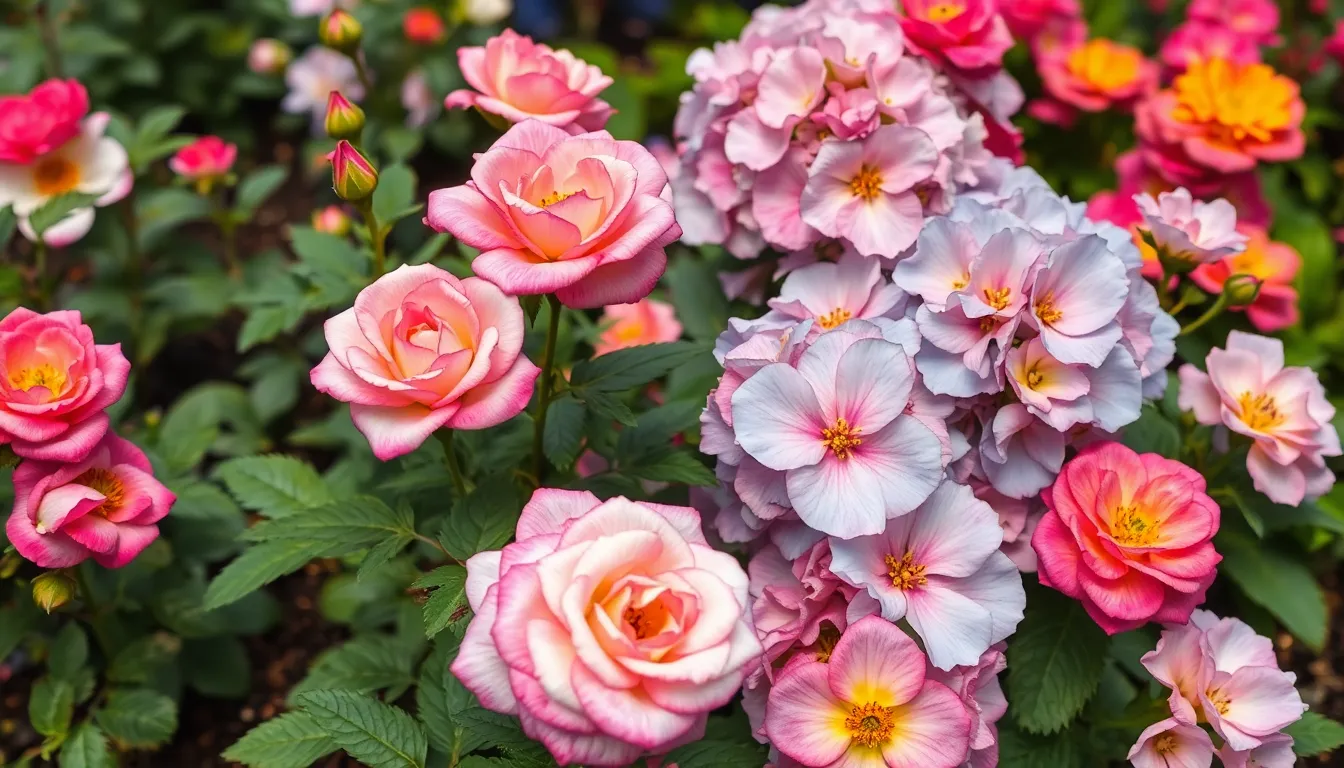
Flowering plants offer some of the most rewarding coffee ground applications, especially when we focus on varieties that naturally prefer acidic growing conditions.
Roses and Their Feeding Requirements
Roses thrive with coffee ground treatments because they prefer slightly acidic soil and benefit significantly from the nitrogen boost these grounds provide. We recommend using used coffee grounds rather than fresh ones to avoid overwhelming the plants with excess acidity or caffeine compounds.
The nitrogen content in coffee grounds promotes healthy foliage growth and supports vibrant bloom production throughout the growing season. Roses require consistent feeding to maintain their flowering performance, making coffee grounds an excellent natural fertilizer option.
Mix used coffee grounds directly into the soil around rose bushes or add them to your compost pile for gradual nutrient release. We’ve found that combining coffee grounds with other organic materials creates the ideal growing environment for sustained rose health and flower production.
Hydrangeas for Color Enhancement
Hydrangeas respond dramatically to coffee ground applications, particularly when we want to enhance their natural blue coloration. Coffee grounds acidify the soil gradually, which intensifies the blue hues in hydrangea flowers through natural pH adjustment.
Used coffee grounds work best for this application since they provide gentle soil acidification without the risk of caffeine damage to plant roots. The soil pH change occurs slowly over time, allowing the plant to adapt naturally while developing more vibrant flower colors.
Apply used coffee grounds around the base of hydrangea plants in spring and early summer for optimal color development. We recommend monitoring soil pH levels to ensure the acidification stays within the ideal range for blue flower production.
Lily Varieties and Bulb Plants
Lily varieties and bulb plants like Lily of the Valley benefit from coffee ground applications when we use them judiciously around established plantings. These plants appreciate the gentle soil acidification and nutrient boost that used coffee grounds provide without overwhelming their delicate root systems.
Bulb plants respond well to the improved soil structure that coffee grounds create, improving drainage while maintaining adequate moisture retention. We’ve observed that lilies show stronger stem development and more abundant flowering when coffee grounds are incorporated into their growing medium.
Mix used coffee grounds into the soil around lily plantings rather than applying them as surface mulch to prevent water repellency issues. The gradual nutrient release from decomposing coffee grounds supports healthy bulb development and promotes vigorous spring emergence.
Houseplants That Respond Well to Coffee Grounds
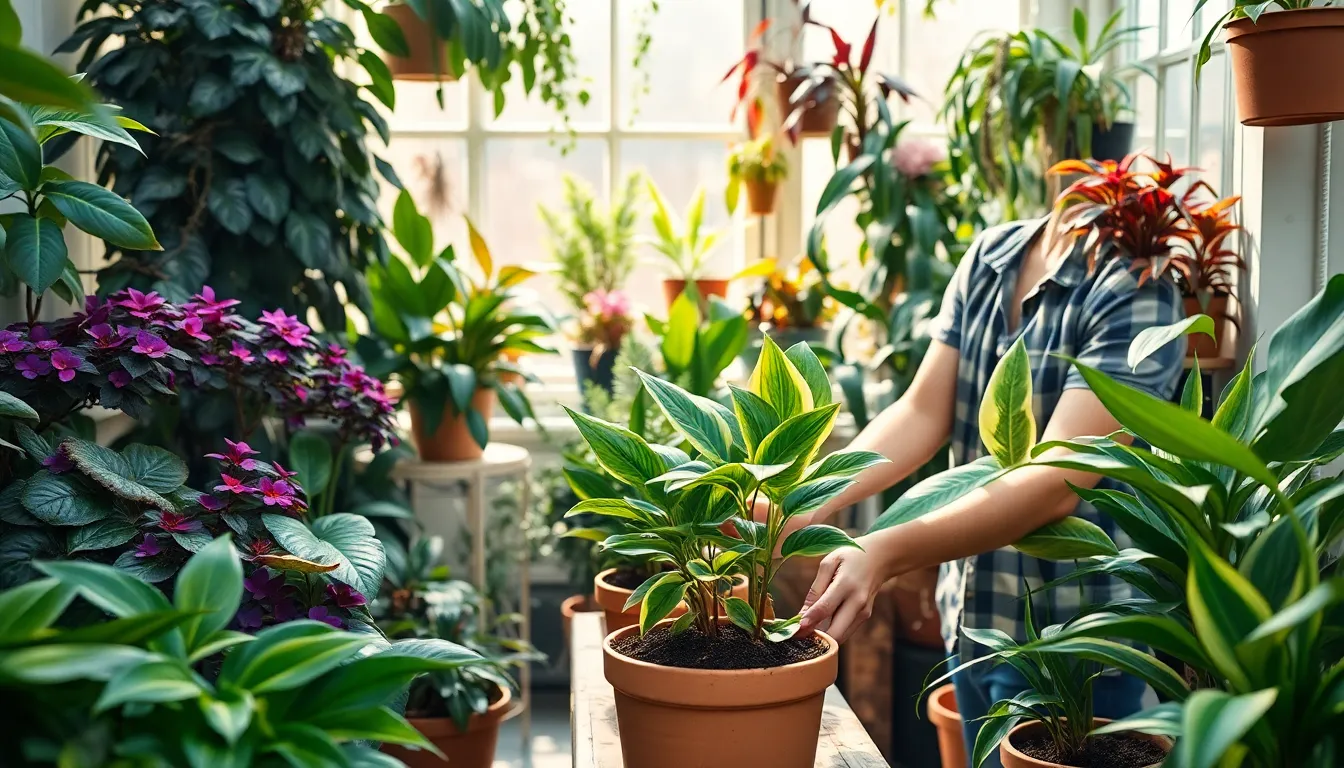
Moving from outdoor gardens to indoor spaces, we’ve discovered that many houseplants thrive with coffee ground applications when used correctly.
African Violets and Flowering Houseplants
African violets flourish with coffee grounds because they prefer acidic soil rich in nitrogen, making this kitchen waste an excellent match for their growing needs. We recommend adding coffee grounds or diluted coffee water to encourage blooming and maintain healthy foliage throughout the growing season. Azaleas and amaryllis also appreciate the nutrient boost from coffee grounds when we use them properly in compost or diluted form. These flowering houseplants respond particularly well to the gradual nutrient release that composted coffee grounds provide.
Ferns and Tropical Indoor Plants
Ferns thrive when fed with coffee grounds because these plants naturally prefer acidic, organic rich soil that mimics their forest floor origins. Coffee grounds add essential organic matter and nitrogen that support lush fern growth while improving their vibrant green leaves. Tropical plants benefit from the same nutrient profile, as coffee grounds help recreate the rich, slightly acidic conditions these plants experience in their native environments. We’ve found that mixing coffee grounds into the potting soil creates an ideal growing medium for these moisture loving plants.
Snake Plants and Succulents
Snake plants (Sansevieria) tolerate various light conditions and benefit from coffee grounds, which provide a nitrogen boost for healthy leaf growth without overwhelming their hardy nature. Succulents respond well to coffee grounds when we use them sparingly and mix them thoroughly to avoid compaction or excess moisture retention. These drought tolerant plants prefer well draining soil, so coffee grounds help enrich the growing medium without creating soggy conditions. We always ensure proper drainage when using coffee grounds with succulents to prevent root rot and maintain their preferred growing conditions.
Trees and Shrubs That Benefit From Coffee Ground Mulching
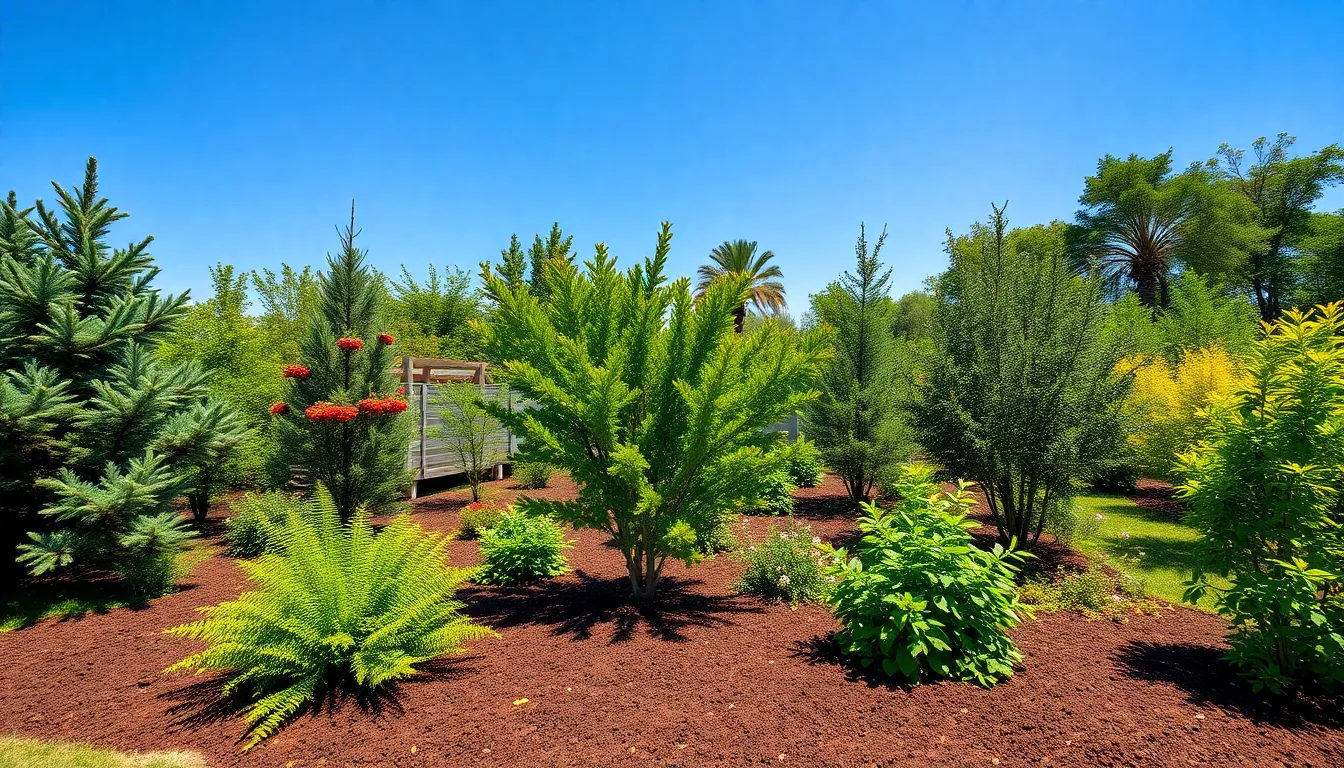
Larger woody plants present excellent opportunities for coffee ground applications, offering substantial root zones that can effectively use the nutrients and organic matter coffee grounds provide.
Evergreen Trees and Conifers
Pines benefit significantly from coffee ground mulching since they naturally thrive in slightly acidic forest conditions. We’ve found that acid-loving conifers respond well to the nutrient boost coffee grounds deliver, particularly during their active growing seasons.
Fir trees show improved growth when coffee grounds are applied around their base, as these evergreens appreciate the gradual release of nitrogen and organic matter. The mulching effect helps retain moisture around their shallow root systems while slowly acidifying the soil to match their preferred growing conditions.
Spruce varieties respond positively to coffee ground applications mixed with other organic materials like pine needles or leaf mold. These conifers benefit from the improved soil structure and water retention that coffee grounds provide, especially during dry periods when moisture conservation becomes critical.
Fruit Trees and Citrus Plants
Citrus plants thrive with coffee ground treatments because they require both acidic conditions and steady nitrogen availability for healthy fruit production. We recommend applying used coffee grounds around the drip line of citrus trees, mixing them with compost to prevent compaction and ensure proper nutrient release.
Blueberry bushes show exceptional response to coffee ground mulching since they demand acidic soil conditions with pH levels between 4.5 and 5.5. Berry shrubs like raspberries, blackberries, and currants also prefer the lower pH environment that coffee grounds help maintain, though we advise avoiding applications during fruit development to prevent taste interference.
Apple and pear trees benefit from the nitrogen content in coffee grounds, which supports vigorous leaf growth and fruit development. Stone fruits like peaches and plums respond well to coffee ground applications during their early growing season, when the additional nitrogen promotes healthy branch development and flower bud formation.
Ornamental Shrubs and Hedges
Azaleas and rhododendrons flourish with regular coffee ground applications since these acid-loving shrubs require the exact growing conditions coffee grounds help create. We’ve observed that these ornamental plants show improved flower production and more vibrant foliage when coffee grounds are incorporated into their mulching routine.
Hydrangeas benefit tremendously from coffee ground treatments, often displaying more intense blue flower colors due to the gentle soil acidification effects. The organic matter in coffee grounds improves soil structure around these moisture-loving shrubs while providing essential nutrients for robust growth and abundant blooms.
Roses respond positively to coffee ground applications every 4 weeks until June, as these nutrient-hungry plants require consistent feeding throughout their growing season. Camelias and gardenias also thrive with coffee ground mulching, showing improved flower quality and healthier foliage when this organic amendment is mixed with other compost materials around their root zones.
How to Properly Apply Coffee Grounds to Your Plants
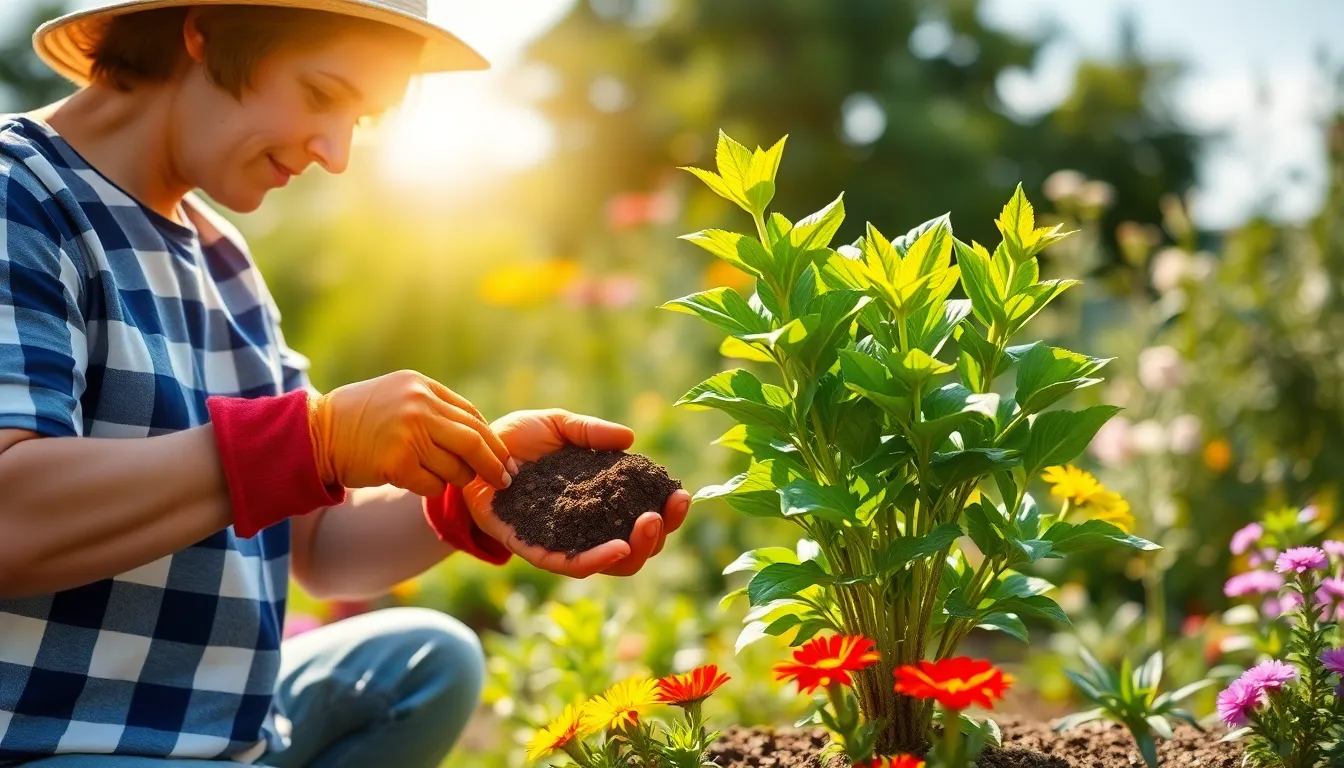
Getting the most from coffee grounds requires proper preparation and application methods. We’ll guide you through the essential steps to ensure your plants receive maximum benefits while avoiding common pitfalls.
Preparation and Composting Methods
Used coffee grounds work better than fresh ones for plant applications. Fresh grounds contain high levels of caffeine and acidity that can harm sensitive plants, while used grounds offer lower caffeine content and more neutral pH levels.
Composting remains the safest method for preparing coffee grounds. Adding used grounds to your compost pile along with other organic materials creates a balanced amendment that breaks down gradually. This process neutralizes excess acidity and allows beneficial microorganisms to transform the grounds into nutrient-rich humus.
Drying coffee grounds completely prevents mold growth when composting isn’t possible. Spread the used grounds on a baking sheet or newspaper and let them air dry for 24-48 hours. Dried grounds mix more easily into soil and won’t create moisture retention problems around plant roots.
Mixing coffee grounds with other organic materials creates optimal growing conditions. Combine one part coffee grounds with three parts brown materials like dried leaves, shredded paper, or wood chips to balance carbon and nitrogen ratios.
Application Techniques and Timing
Spring and summer applications provide maximum benefit when plants actively grow and can use added nutrients. Applying coffee grounds during dormant periods wastes their nutritional value and may cause nutrient buildup in soil.
Spreading grounds around the plant base works best for established garden plants. Keep the grounds 2-3 inches away from stems and trunks to prevent moisture retention issues and potential root damage. This technique allows roots to access nutrients gradually as grounds decompose.
Top dressing container plants requires lighter applications than garden beds. Mix small amounts of used grounds into the top inch of potting soil, or sprinkle a thin layer on the surface and water gently to incorporate.
Working grounds into existing soil improves distribution and prevents water repellency. Use a garden fork or cultivator to mix grounds 2-4 inches deep around established plants, being careful not to damage shallow root systems.
Dosage Guidelines and Frequency
Monthly applications during growing season prevent overuse while providing consistent nutrition. Most plants benefit from coffee ground treatments every 3-4 weeks from spring through late summer, with reduced frequency in fall.
Thin layers work better than thick applications for surface treatments. Apply no more than ¼ inch of coffee grounds as mulch, and always mix with other organic materials to maintain proper soil structure and drainage.
Container plants need smaller amounts than garden beds due to limited soil volume. Use 1-2 tablespoons of used coffee grounds per medium-sized pot, mixed thoroughly with existing potting medium.
Monitoring plant response helps determine optimal frequency for individual species. Watch for signs of nitrogen overload like excessive leaf growth with poor flowering, or soil pH changes that affect nutrient uptake. Reduce applications if plants show stress symptoms or yellowing leaves.
Plants to Avoid When Using Coffee Grounds
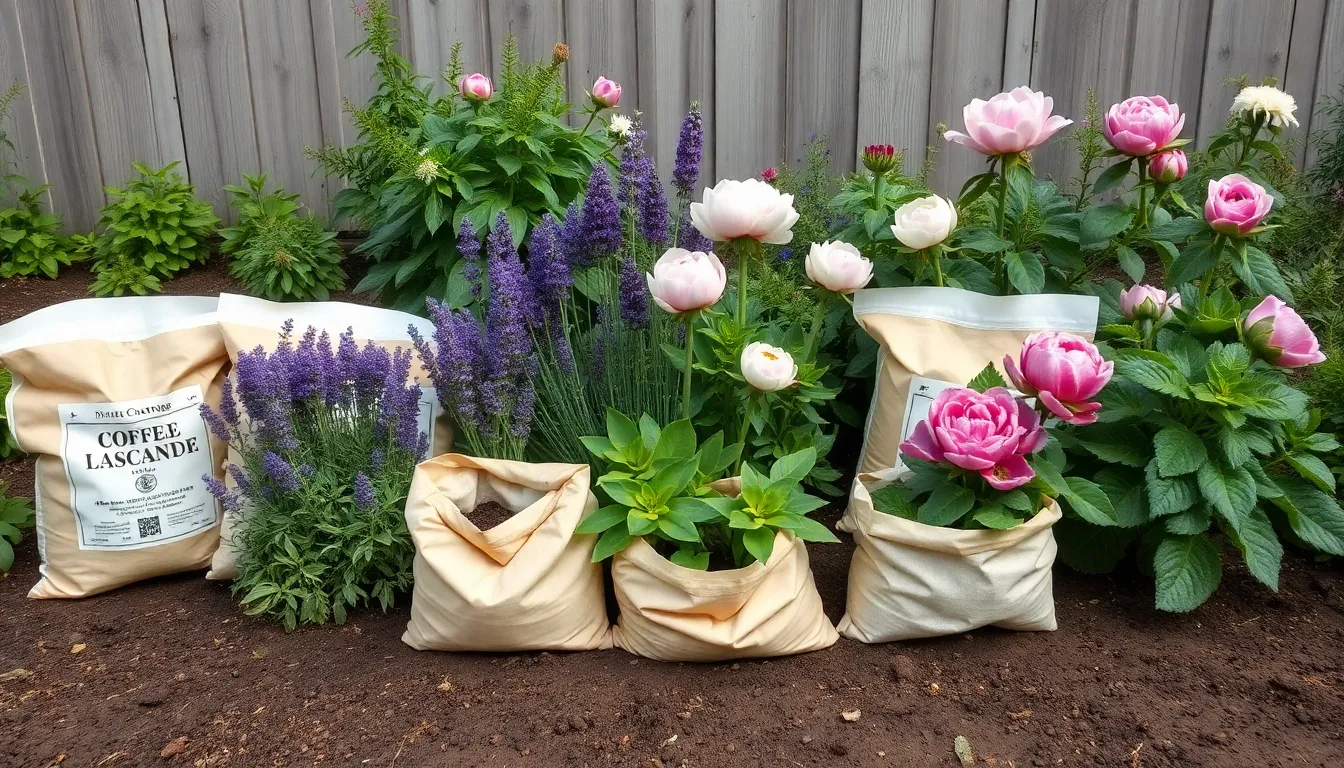
While coffee grounds benefit many plants, certain varieties don’t thrive with this organic amendment. We’ll explore which plants to avoid treating with coffee grounds to ensure your garden stays healthy.
Alkaline-Loving Plants and Vegetables
Plants that prefer alkaline or neutral soil typically dislike coffee grounds because of their acidifying effect. These varieties need higher pH levels to absorb nutrients properly and maintain healthy growth.
Vegetables that struggle with coffee grounds include:
- Asparagus thrives in neutral to alkaline soil and may experience stunted growth when coffee grounds lower the pH
- Beets prefer slightly alkaline conditions and can develop poor root formation with acidic amendments
- Cabbage family plants like broccoli, cauliflower, and Brussels sprouts need neutral soil to prevent clubroot disease
- Spinach grows best in neutral to slightly alkaline soil and may show yellowing leaves with coffee ground applications
Ornamental plants to avoid treating with coffee grounds:
- Lavender requires alkaline soil and well-draining conditions that coffee grounds can compromise
- Clematis vines prefer neutral to alkaline soil and may experience reduced flowering with acidic amendments
- Lilac bushes thrive in alkaline conditions and can suffer from nutrient deficiencies when soil becomes too acidic
- Peonies need neutral to slightly alkaline soil and may develop weak stems with coffee ground applications
Sensitive Seedlings and Young Plants
Sensitive seedlings and young plants should not be exposed to coffee grounds directly, as the caffeine and acidity may stunt their growth or damage delicate roots. These vulnerable plants need gentle growing conditions to establish strong root systems.
Houseplants that don’t tolerate coffee grounds:
- Aloe vera plants prefer neutral to slightly alkaline soil and can develop root rot with coffee ground amendments
- Orchids require exact growing media and may suffer from the organic matter in coffee grounds
- Pothos plants thrive in neutral conditions and can experience leaf yellowing with acidic soil amendments
- Newly germinated seeds need consistent moisture and pH levels that coffee grounds can disrupt
- Transplanted seedlings have fragile root systems that caffeine residue can damage
- Young vegetable starts may experience transplant shock when coffee grounds alter soil chemistry too quickly
- Herb seedlings like basil and oregano prefer neutral conditions and steady nutrient levels during establishment
Conclusion
We’ve discovered that coffee grounds offer remarkable versatility as a garden amendment when used correctly. From acid-loving plants like blueberries and azaleas to nitrogen-hungry vegetables and even houseplants coffee grounds can enhance soil structure and provide essential nutrients.
The key to success lies in proper application and understanding which plants benefit most. While acid-loving and nitrogen-seeking plants thrive with coffee ground treatments it’s equally important to avoid using them on alkaline-loving varieties and young seedlings.
By composting coffee grounds first and applying them thoughtfully we can transform this kitchen waste into a valuable gardening resource. Whether you’re nurturing indoor plants or tending outdoor gardens coffee grounds represent an eco-friendly way to boost plant health and reduce household waste simultaneously.
Frequently Asked Questions
What are the main benefits of using coffee grounds in gardening?
Coffee grounds provide essential nutrients like nitrogen, phosphorus, and potassium that promote plant growth. They improve soil structure by enhancing drainage and aeration, while gradually releasing nutrients to prevent burning. Coffee grounds also help retain soil moisture and create beneficial conditions for microorganisms that break down organic matter.
Which plants benefit most from coffee grounds?
Acid-loving plants like azaleas, blueberries, rhododendrons, camellias, and gardenias thrive with coffee grounds. Nitrogen-loving vegetables such as tomatoes, peppers, lettuce, carrots, and radishes also benefit. Additionally, roses, hydrangeas, evergreen trees, citrus plants, and many houseplants like African violets and ferns respond well to coffee ground applications.
Should I use fresh or used coffee grounds?
Used coffee grounds are preferable to fresh ones. Fresh grounds are more acidic and contain higher caffeine levels that can harm plants. Used grounds have a more neutral pH and lower caffeine content, making them safer for most plants. Always use grounds that have been brewed rather than straight from the package.
How should I apply coffee grounds to my plants?
Mix coffee grounds with other organic materials or compost them first for best results. Spread grounds around established plants while keeping them away from stems to prevent moisture issues. Apply monthly during growing season and monitor plant responses. Avoid thick applications that can create water-repellent layers.
Which plants should I avoid using coffee grounds on?
Alkaline-loving plants like asparagus, beets, lavender, clematis, and lilacs should not receive coffee grounds as they prefer neutral to alkaline soil. Avoid using coffee grounds on sensitive seedlings and young plants, as the caffeine and acidity can stunt growth or damage delicate root systems.
Can I use coffee grounds for indoor plants?
Yes, many houseplants benefit from coffee grounds when used properly. African violets, ferns, tropical plants, and flowering houseplants like azaleas thrive with coffee ground applications. For succulents and snake plants, use sparingly and mix thoroughly to ensure proper drainage and prevent root rot.
Do coffee grounds make soil acidic?
Used coffee grounds have a more neutral pH than fresh grounds and don’t dramatically acidify soil. While they provide some acidifying effect, they’re more beneficial for adding organic matter and nutrients. The gradual decomposition creates conditions that slightly favor acid-loving plants without causing extreme pH changes.
How often should I apply coffee grounds to my garden?
Apply coffee grounds monthly during the growing season for best results. Monitor your plants’ responses and adjust frequency accordingly. Avoid over-application, which can lead to nitrogen overload or create compacted layers that repel water. Start with small amounts and increase gradually based on plant performance.

